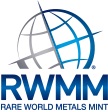Rare metals are gaining attention as a unique investment class, offering both industrial utility and long-term financial potential. With their scarcity and essential role in high-tech industries, investors are increasingly considering them as alternatives to traditional precious metals. But do they justify the risks associated with them? And where does the most rarest metal in the world fit into this equation? Let’s break down the realities of investing in these extraordinary elements.
Why Are Rare Metals Becoming a Hot Investment?
For years, metals like gold and silver have been the primary choice for investors looking to hedge against inflation and economic uncertainty. However, rare metals are stepping into the spotlight due to their increasing demand in critical industries such as green energy, aerospace, and medical technology.
One of the primary reasons for this shift is their limited supply. Unlike gold, which is widely mined across the world, many rare metals are found only in small quantities in specific regions. This scarcity drives their value, making them attractive to long-term investors.
Another factor is industrial necessity. Metals like rhenium, rhodium, and osmium are essential for advanced technologies, and as industries expand, the demand for these elements continues to rise. This demand ensures that rare metals maintain their relevance and, in some cases, become even more valuable over time.

What Risks Should Investors Consider?
While rare metals present exciting opportunities, they also come with risks. Understanding these challenges is crucial before making an investment.
● Market Volatility
Rare metals, unlike gold and silver, have less-established trading markets. Their prices can be highly volatile due to factors such as supply chain disruptions, geopolitical tensions, and shifts in industrial demand.
● Liquidity Concerns
Unlike traditional precious metals, rare metals are not always easy to sell. Finding buyers can take time, and the resale market is often less liquid than that of gold or silver.
● Storage and Authenticity
Storing rare metals requires specialized handling, especially for those with high reactivity or density. Additionally, ensuring authenticity is critical, as counterfeit materials can be a concern for investors.
Despite these challenges, many investors are drawn to rare metals due to their high scarcity and increasing demand. Their role in emerging industries gives them a long-term appeal that few other asset classes can match.
What is the Most Rare Metal in the World?
The title of the most rare metal in the world often depends on how scarcity is measured—whether by abundance in the Earth’s crust, difficulty in mining, or rarity in pure form. Some of the rarest include:
● Osmium – The densest natural element, with limited mining sources.
● Rhodium – Extremely scarce and primarily extracted as a byproduct of platinum mining.
● Tantalum – Used in electronics and highly resistant to corrosion, yet difficult to source.
● Rhenium – Essential for aerospace applications, with an annual global production of only about 50 tons.
Investing in these metals offers exposure to some of the scarcest resources on Earth, making them highly attractive for those who understand their long-term value.
The Future of Rare Metal Investments
The investment landscape for rare metals is evolving. As industries continue to innovate and global markets shift towards sustainability, demand for these metals will likely increase. Their applications in renewable energy, space exploration, and advanced medical technologies make them critical to the future economy.
Additionally, governments and industries worldwide are increasingly focusing on securing stable supplies of these essential materials. This growing attention could lead to further price appreciation, making rare metals a strategic asset for forward-thinking investors.
Final Analysis:
Some investments follow the market—others define it. Rare metals fall into the latter category. They are not just commodities; they are the building blocks of tomorrow’s most advanced industries.
Rare World Metals Mint provides access to some of the world’s rarest and most valuable metals, allowing you to own a tangible asset that industries rely on. Whether you’re looking to diversify your portfolio or secure a high-potential investment, rare metals offer an unmatched opportunity.
Why wait for the future when you can own a piece of it today? Explore our collection and invest in rare metals that stand the test of time.
FAQs
What are the 5 rare metals?
The five rarest metals, based on their abundance in the Earth's crust, are gold, platinum, osmium, iridium, and palladium.
What is the rarest metal in the world?
Astatine (At) is the rarest naturally occurring metal on Earth. It is a radioactive element and exists only in trace amounts, as it is a decay product of heavier elements.
What are the 17 rare earth metals?
The 17 rare earth metals, also called rare earth elements (REEs), are: scandium (Sc), yttrium (Y), and the fifteen lanthanides—lanthanum (La), cerium (Ce), praseodymium (Pr), neodymium (Nd), promethium (Pm), samarium (Sm), europium (Eu), gadolinium (Gd), terbium (Tb), dysprosium (Dy), holmium (Ho), erbium (Er), thulium (Tm), ytterbium (Yb), and lutetium (Lu).
What are the top 10 most valuable metals?
The top 10 most valuable metals, surpassing gold, are Californium, Rhodium, Palladium, Platinum, Iridium, Osmium, Ruthenium, Rhenium, Silver, and Indium.
What metal is worth money?
Metals that hold considerable value include gold, silver, platinum, and the platinum group metals (palladium, rhodium, ruthenium, iridium, and osmium). Other metals that are valuable include copper, brass, and stainless steel.






